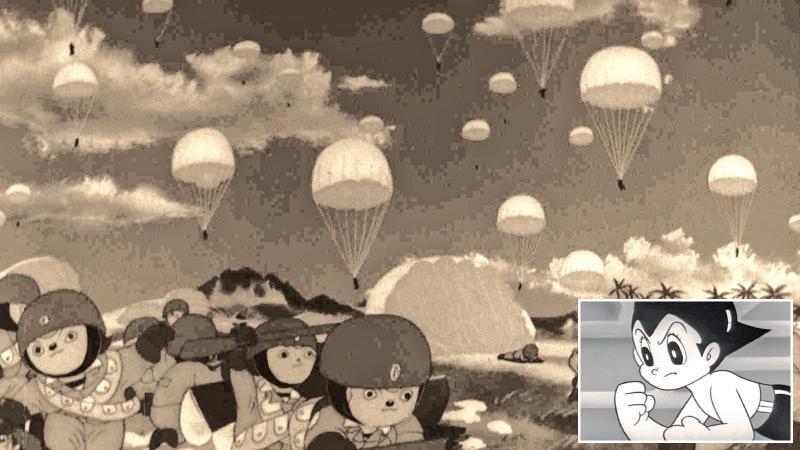
Originally defined as a blanket term referring to any animation, literally meaning animation in Japanese, the word Anime has over time come to mean something a bit different as the medium exploded in popularity far past the shores of its home country and onto the global stage. Now referring to the uniquely Japanese style of art and animation, Anime has made a name for itself in global mainstream media and has cemented itself in the world as a vital element of Japanese culture and of animation as a whole. Formerly a niche dominated by American animation, by 2016, Anime accounted for 60% of the world’s animated television shows. This is especially impressive when considering how the medium of animation has only recently escaped the narrow minded cultural assumptions and biases against it; in no small part, thanks to the contributions of anime.
 Despite having very similar historical starts and having taken lots of inspiration from it, animation differences between Japan and its western counterparts can be felt in almost every important aspect. The most obvious difference is in its demographics. While animation in the west has over time managed to shed the “Animation is for Children” assumptions, the biases still exist, and while more mature animations exist, the vast majority still caters to either children or younger audiences. This is in great contrast to Japan where, as a medium on equal terms to live action TV, anime caters to all demographics and as such it is just as easy to find kids’ anime (Kodomomuke) as it is to find adult oriented anime. As anime is such a popular medium, animation studios are overburdened with weekly projects and as a result budgets are oftentimes stretched too thin, costing animation quality. This results in most TV anime having much lower frame rates when compared to western animation. Their approaches to even choosing to animate is widely different as well, while western media tends to animate only when a live action depiction is either impossible or too costly, Japan seems to animate literally anything, even stories that might be easier and less costly to depict in live action, simply because the medium is so well loved.
Despite having very similar historical starts and having taken lots of inspiration from it, animation differences between Japan and its western counterparts can be felt in almost every important aspect. The most obvious difference is in its demographics. While animation in the west has over time managed to shed the “Animation is for Children” assumptions, the biases still exist, and while more mature animations exist, the vast majority still caters to either children or younger audiences. This is in great contrast to Japan where, as a medium on equal terms to live action TV, anime caters to all demographics and as such it is just as easy to find kids’ anime (Kodomomuke) as it is to find adult oriented anime. As anime is such a popular medium, animation studios are overburdened with weekly projects and as a result budgets are oftentimes stretched too thin, costing animation quality. This results in most TV anime having much lower frame rates when compared to western animation. Their approaches to even choosing to animate is widely different as well, while western media tends to animate only when a live action depiction is either impossible or too costly, Japan seems to animate literally anything, even stories that might be easier and less costly to depict in live action, simply because the medium is so well loved.
The history of the medium is an old one. Experimenting with animation techniques developed by the west, the first few examples of Japanese animation date back to as far back as 1917, with some perhaps being even older. However, most of these works were lost to the devastation of the 1923 Great Kantō earthquake. By the 1930s Animation had cemented itself as a legitimate alternative to the live action industry but still hadn’t entered the mainstream due to the costs for animating and the shortages of resources during the war but the Japanese government took notice of its potential. Numerous animators were employed by the government to create propaganda pieces for the Second Sino-Japanese and Second World War, but it should be noted that the government still considered animation to not be as effective a tool for propaganda as the rest, so it was primarily designed for children. Post World War Two took its toll on Japanese culture and it’s been theorized that most of these propaganda films were burned by the US occupation.
However, the west would continue to inspire Japanese animation in major ways and the success of the Walt Disney company after its first feature film, Snow White and the Seven Dwarfs debuted. Arguably, the most important person to anime, a veritable legend, Osamu Tezuka, adapted the infamously expensive Disney animation techniques into a far cheaper and limited production while also defining the unique anime art style that would become the standard for Japanese animation to this day. This allowed for far more anime to be produced at a much lower cost, jump starting a new era of anime. By the 80s anime finally became part of the mainstream. Though still not as popular as the likes of Manga, adapting manga further extended its reach to Japanese audiences.
Unfortunately, the present and future of anime isn’t bright. Lower birthrates, competition from the likes of video games, cell phones and manga have led to a decline of TV anime, with only a handful of TV stations still proudly anime friendly, like TV Tokyo. Animators have a notoriously grueling work life, working laboriously for next to nothing and with little job security. CG productions and switching from weekly to seasonal anime has helped somewhat, but still Japanese animation is in a difficult place right now and how they proceed would be what decides whether it lives or dies.
